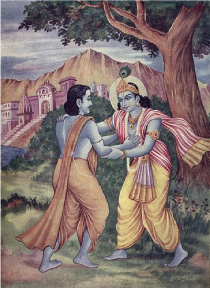I
An Ideal, in essence, represents first and foremost a structure of right and wrong, moral and immoral, good and bad, valid and invalid.
This structure of “values” is embodied in –
- the way we “are”
- the way we judge (if we must judge at all)
- the way we live
- the way we behave
II
Let us examine these four ideas:
-
The way we “are”
This represents our “ideal of being” – for example the Greek Ideal of “youthful perfection” versus the Buddhist Ideal of “wise silence” are both Ideals of being. Western Society therefore celebrates youth and enjoyment; Buddhist society celebrates the notion of monkhood, practice and silence.
-
The way we judge
This represents the “matrix of measures”.
Is polygamy right or wrong? Is being transactionally correct better or giving intrinsically better than taking – thereby rendering all transactions incorrect?
The “matrix of measures” is the “Ideal in Context” of a society, religion, clime, profession, etc. -
The way we live
This represents the “journey of becoming” which is life itself. Why and for what purpose do we ‘become’? In other words, why must a man struggle at all?
– An ideal of ‘wealth’ connotes a journey of acquisition of wealth. An ideal of devotion connotes a journey of renunciation of world and the development of devotional attitudes. An ideal of contribution connotes the development of the “capacity to serve” and the deployment of that “capacity to serve” in the correct and appropriate manner. An ideal of “householdership” connotes a journey of growing up, marriage, bringing up children, and helping them participate in the world. -
The fourth dimension, the way we behave, is the most immediate of all
What is our conception of “inter-human relationships”? What is our meaning of valid ‘inter-human behavior’? Must men resolve then by force? Is conquest and dominance intrinsically true? At a personal level, is the purpose of a relationship ‘specifiable outcomes’ or is there another form of relationship where outcomes don’t matter but it matters whether the journey is one of peace and harmony?
III
These questions represent the four dimensions of the “structure of values” that itself determine our choice of “ideal”. i.e., men choose ideals ‘externally’ that appeal to them most.
IV
So the propagation of an ideal is an iterative process – people choose ideals that they find suitable – the ideals themselves shape choices and values further strengthening their roots in the ideal – and so on.

